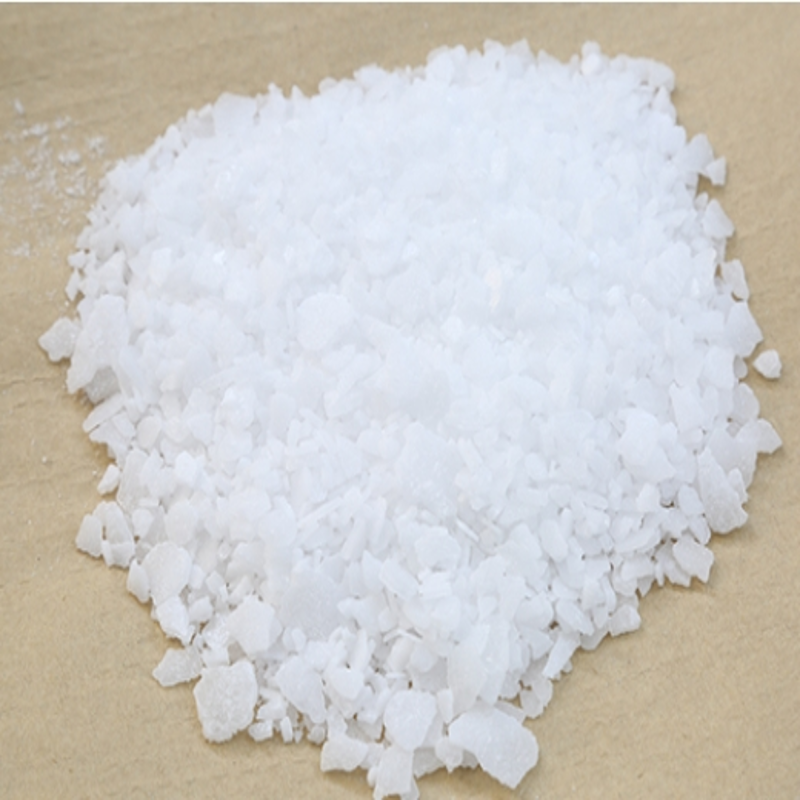-
Categories
-
Pharmaceutical Intermediates
-
Active Pharmaceutical Ingredients
-
Food Additives
- Industrial Coatings
- Agrochemicals
- Dyes and Pigments
- Surfactant
- Flavors and Fragrances
- Chemical Reagents
- Catalyst and Auxiliary
- Natural Products
- Inorganic Chemistry
-
Organic Chemistry
-
Biochemical Engineering
- Analytical Chemistry
- Cosmetic Ingredient
-
Pharmaceutical Intermediates
Promotion
ECHEMI Mall
Wholesale
Weekly Price
Exhibition
News
-
Trade Service
*For medical professionals only
Parkinson's disease (PD) is a neurodegenerative disease that primarily affects the motor nervous system, and according to statistics, there are more than 3 million PD patients in China[1].
α-synuclein (α-Syn) aggregates play a key role in the pathological development of PD, while genetic mutations in the gene SNCA encoding α-Syn can lead to early-onset familial PD [2].
Under pathological conditions, α-Syn undergoes conformational changes to form oligomers and insoluble protein fibers, which eventually accumulate
in Lewy corpora (LB).
But in neurons, scientists have not directly observed the early self-assembly and structural transformation of
α-Syn.
Recently, a team of researchers led by Sonia Gandhi and Andrey Y.
Abramov from University College London and Mathew H.
Horrocks from the University of Edinburgh published the latest research on structural changes in neurons in α-Syn in the leading international journal Nature and Neuroscience
.
Using a single-molecule Förster energy resonance transfer (smFRET) technique, they tracked conformational changes in intracellular α-Syn and found that α-Syn in neurons changes from a monomer state to two different oligomerization states, and that oligomer formation occurs on the membrane surface, especially mitochondrial membranes
.
Physically, mitochondrial cardiac phospholipids can promote rapid oligomerization of α-Syn, impair mitochondrial function, promote mitochondrial reactive oxygen species (mROS) production, further accelerate the oligomerization of α-Syn, lead to changes in mitochondrial membrane permeability, and induce cell death
.
And, they observed similar phenomena
in neurons produced by induced pluripotent stem cells (iPSCs) derived from PD patients.
Overall, this study reveals the mechanism by which α-Syn changes conformations in neuronal cells during the pathogenesis of PD, providing a new theoretical basis
for the clinical development of strategies for the treatment of PD.
Screenshot of the first page of the article
To observe the structural changes of α-Syn, the researchers labeled it with two fluorescents, α-Syn-AF488 labeled in green and α-Syn-AF594
labeled in red.
Subsequently, they added the two fluorescently labeled α-Syn mixture to neuronal cells and excited with light at a wavelength of 594 nm, AF594 emitted fluorescence of 617 nm, and since this signal is not affected by the protein aggregation state, the fluorescence intensity of the detected AF594 represents the total α-Syn (monomer + aggregate).
When the oligomer is formed, the distance between the different α-Syn monomer molecules is very close, at this time with 488 nm wavelength of light excitation, the energy will be transferred from the α-Syn-AF488 (donor) in the excited state to the adjacent α-Syn-AF594 (receptor) in a non-excited manner, so that AF594 produces fluorescence with an emission wavelength of 617 nm (without FRET, excitation of AF488 with 488 nm wavelength of light will emit 525 nm wavelength fluorescence).
They called this signal of 617 nm fluorescence produced by this 488 nm excitation light a fluorescence resonance energy transfer (FRET) signal
.
Next, the researchers added 500 nM of the above two fluorescent labels mixed α-Syn (containing 1% oligomers and 99% monomers) to the primary neurons, and found that neurons uptake α-Syn, with 594 nm wavelength light excitation can detect fluorescence signals in cells (total α-Syn), and with 488 nm wavelength light excitation can detect FRET signals (oligomer formation) in cells, which will gradually increase over time.
It is shown that neurons continue to ingest α-Syn, and α-Syn gradually forms aggregates
within the cell.
FRET sensors detect oligomerization of intracellular α-Syn
And, they found that by adding only α-Syn monomers (without oligomers), they can gradually self-assemble into oligomers to produce FRET signals
.
It has been previously reported that the use of single-molecule FRET (smFRET, FRET application at the single-molecule level) technology can divide α-Syn oligomers into two types: type A is more loose, FRET signal is weaker, and toxicity is weaker; Type B is rich in β sheet structure, strong FRET signal, anti-proteinase K, and strong toxicity[4].
They used a variety of techniques, such as intracellular FRET, smFRET and total internal reflection fluorescence (TIRF) microscopy, to detect α-Syn self-assembly, oligomer formation, and structural transition from type A to type B, and found that intracellular, aggregate formation is mainly dependent on concentration and time, from monomer assembly to oligomer takes very short, 500 nM α-Syn monomer can generally be assembled from monomer into A-type aggregate within 3 hours, B-type oligomers that convert to high FRET signals take several days
.
A53T α-Syn is a mutated form of α-Syn found in PD patients, and researchers found that A53T mutations can accelerate the oligomerization process, suggesting that the acceleration of oligomerization caused by A53T mutations may be related
to the pathogenesis of PD.
So why does A53T cause oligomerization to accelerate?
Next, the researchers studied the subcellular localization of the A53T α-Syne oligomer, and they observed that there was a "hot spot" region in α the formation of oligomers in the cell and co α-localization with mito-GFP fluorescently labeled mitochondria in the formation of oligomers in the cell
。
There are "hot spots" in the formation of oligomers within cells
10-20% of the mitochondrial membrane component is made up of cardiolipin (CL), so the researchers examined the interaction of α-Syn with vesicles containing cardiolipids and found that cardiolipids can accelerate the oligomerization process
of A53T α-Syn.
Further observations found that the degree of colocalization of A53T α-Syn with endogenous cardiolipids increased over time, and cardiolipids could be integrated α-Syn aggregate structures, further accelerating the aggregation process
.
A53T α-Syn colocalization with cardiolipids during aggregation
So does the formation of A53T α-Syn aggregates affect mitochondrial function?
Next, the researchers examined the effect of A53T α-Syn on mitochondrial function, they used the autofluorescence of NADH, the substrate of mitochondrial electron transport chain complex I, to indicate the redox state of cells and the function of complex I, and found that the addition of 500 nM A53T α-Syn could induce an increase in NADH autofluorescence, indicating that complex I function was inhibited, and they also found that A53T α-Syn would cause depolarization of mitochondria and reduce the membrane potential difference of mitochondria
。
Prior to A53T α-Syn treatment, the addition of substrate pyruvate from Complex I, or Succinic Acid from Complex II salvage, can save the effects of A53T α-Syn on mitochondrial electron transport chain function and membrane potential difference of
mitochondria.
In healthy mitochondria, the membrane potential difference is mainly maintained by complex I-mediated respiration, while in A53T α-Syn-treated mitochondria, the membrane potential difference cannot be maintained by complex I alone, but also needs to be maintained by complex V, and the energy (ATP) produced by mitochondria is also less
.
In addition, the researchers also found that A53T α-Syn treatment can increase the rate of intracellular superoxide production, and they examined the source of ROS and found that it came mainly from mitochondria
.
Since Sonia Gandhi's research team had previously found that mitochondrial permeability transition pore (mPTP) mediated cytotoxicity induced by α-Syn oligomers, and the transformation of α-Syn structure into oligomer structures rich in β layers was necessary for the opening of mPTP[5], they first examined whether A53T α-Syn would affect the opening of mPTP, and found that A53T α-Syn could promote mPTP
。
A53T α-Syn promotes mPTP openness
Thus, A53T α-Syn monomer comes into contact with the mitochondrial membrane and soon forms an oligomer form, promoting the opening of mPTP, inducing apoptosis and cytotoxicity
.
In addition, because A53T α-Syn can promote mROS production, they examined whether mROS affects aggregate formation, and found that the mROS induced by A53T α-Syn can accelerate the oligomerization process and cell death, while treatment with an antioxidant mito-TRMPO that targets mitochondria can significantly inhibit oligomer formation as well as cell death
.
The above results show that mitochondrial respiratory abnormalities, as well as the production of mROS, work synergistically with cardiolipids, promote the formation of A53T α-Syne oligomers within cells, and lead to neuronal death
.
Finally, they validated
with two PD patients carrying the SNCA-A53T mutation, as well as cortical neurons produced by iPSCs of healthy human origin in the control group.
They found that aggregates in neurons derived from SNCA-A53T iPSC formed faster and secreted more
endogenous aggregates than control group neurons.
Moreover, mitochondrial function in neurons derived from SNCA-A53T iPSC is also abnormal: the membrane potential difference is reduced, mROS is elevated, the complex I function is suppressed, and the mPTP is opened early
.
The process by which α-Syn monomers in neurons form aggregates and induce cytotoxicity
Overall, this research, combined with high-resolution biophysical techniques and iPSC techniques, solves the problem of not being able to accurately describe the formation process of protein aggregates in human cells in the past, reveals the temporal and spatial characteristics of protein aggregate formation in cells, and directly observes A53T mutations in neurons to promote the formation
of oligomer structures.
In addition, this study deepens people's understanding of the early self-assembly initiation process and early aggregation process mechanism of induced α-Syn in PD, and is expected to provide new ideas and theoretical basis
for the clinical treatment of PD.
References:
1.
Qi S, Yin P, Wang L, et al.
Prevalence of Parkinson’s Disease: A Community-Based Study in China.
Mov Disord.
2021; 36(12):2940-2944.
doi:10.
1002/mds.
28762
2.
Chartier-Harlin M-C, Kachergus J, Roumier C, et al.
Alpha-synuclein locus duplication as a cause of familial Parkinson’s disease.
Lancet (London, England).
2004; 364(9440):1167-1169.
doi:10.
1016/S0140-6736(04)17103-1
3.
Choi ML, Chappard A, Singh BP, et al.
Pathological structural conversion of α-synuclein at the mitochondria induces neuronal toxicity.
Nat Neurosci.
2022; 25(September).
doi:10.
1038/s41593-022-01140-3
4.
Horrocks MH, Tosatto L, Dear AJ, et al.
Fast flow microfluidics and single-molecule fluorescence for the rapid characterization of α-synuclein oligomers.
Anal Chem.
2015; 87(17):8818-8826.
doi:10.
1021/acs.
analchem.
5b01811
5.
Ludtmann MHR, Angelova PR, Horrocks MH, et al.
α-synuclein oligomers interact with ATP synthase and open the permeability transition pore in Parkinson’s disease.
Nat Commun.
2018; 9(1):2293.
doi:10.
1038/s41467-018-04422-2
Editor-in-chargeBioTalker







